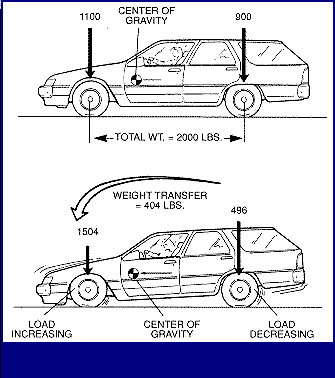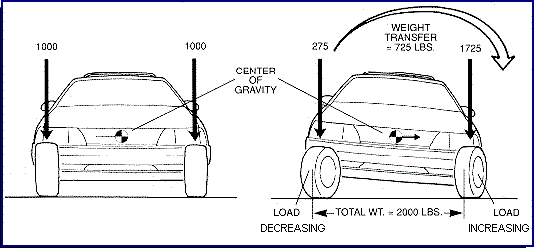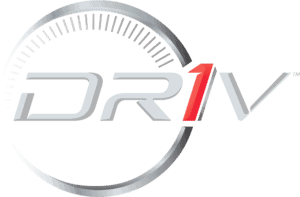COMFORT AND SAFETY
The suspension system allows the vehicle body to ride relatively undisturbed while travelling over rough roads. It also allows the vehicle to corner with minimum roll or sway, stop with a minimum of brake dive, and accelerate with a minimum of acceleration squat. This dynamic control will keep the tyres in contact with the road.
Shocks and Struts ARE Safety Equipment
Most people believe that shocks and struts are only necessary for improving a vehicle’s riding comfort and handling. In truth, they do much more than that; their job is to help keep tyres on the road. A vehicle riding on worn shocks and struts may be unsafe not only to the driver and passengers, but also to other vehicles on the road. By replacing your worn shocks and struts, you’re providing yourself with a safer, more secure vehicle.
Tyre Force Variation: "Downward Force on Tyres"

It’s important to understand that a vehicle’s ability to steer, brake and accelerate depends first and foremost on the adhesion, or friction, between the tyres and the road. This adhesion is also referred to as the roadholding capability of the vehicle.
“Tyre Force Variation” is a measure of the roadholding capability of the vehicle, and is directly influenced by shock absorber or strut performance. Shock absorbers and struts help maintain vertical loads placed on the tyres by providing resistance to vehicle bounce, roll and sway. They also help reduce brake dive along with acceleration squat to achieve a balanced ride. Worn shocks and struts can allow excessive vehicle weight transfer from side to side and front to rear…and that reduces the tyre’s ability to grip the road. Because of this variation in tyre-to-road contact, a vehicle’s handling and braking performance can be reduced. This may affect the safe operation of the vehicle and the safety of those riding inside. Therefore, shocks and struts ARE SAFETY COMPONENTS.

What controls tyre force are the shocks or struts on that vehicle
Tyre loading changes as a vehicle accelerates, decelerates, and turns corners; the size of the four circles of traction at the tyres is also changing with the changes in tyre load. As a vehicle turns a corner, centrifugal force causes weight to transfer from the tyres on the inside of the turn to the tyres on the outside. As a vehicle brakes, inertia will cause weight to transfer from the rear tyres to the front tyres; weight will transfer from the front to the back during acceleration.


